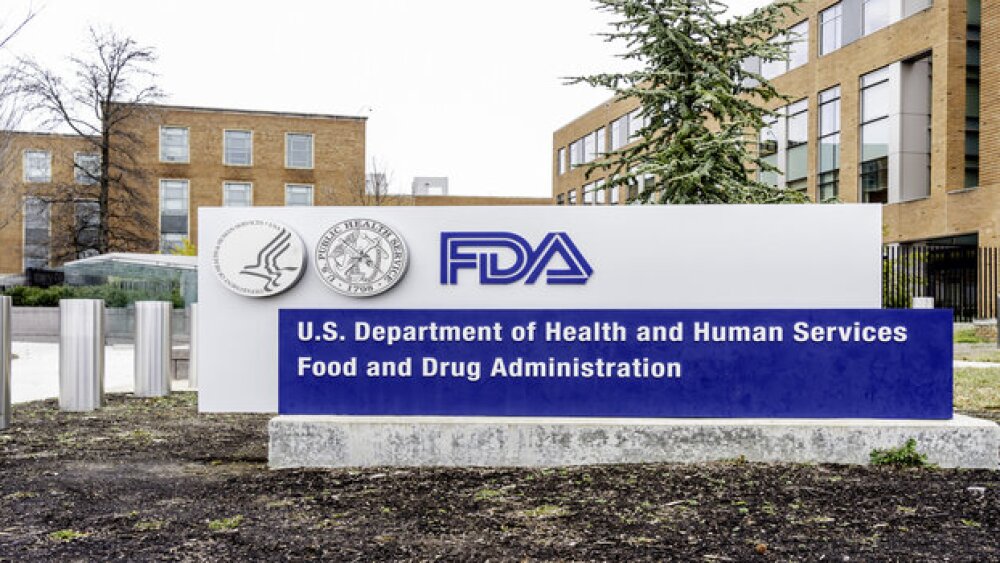Gain Therapeutics, Inc. (Nasdaq: GANX), a biotechnology company leading the discovery and development of allosteric small molecule therapies, today announced that Innosuisse, the Swiss Innovation Agency, supports GT Gain Therapeutics SA with the amount of CHF 2.5 million (~$2.8 million) to develop GT-02287, Gain’s lead program for GBA1 Parkinson’s disease.
BETHESDA, Md., May 03, 2023 (GLOBE NEWSWIRE) -- Gain Therapeutics Inc. (Nasdaq: GANX), a biotechnology company leading the discovery and development of allosteric small molecule therapies, today announced that Innosuisse, the Swiss Innovation Agency, supports GT Gain Therapeutics SA with the amount of CHF 2.5 million (~$2.8 million) to develop GT-02287, Gain’s lead program for GBA1 Parkinson’s disease.
The Company’s Swiss Accelerator innovation project supported by Innosuisse entitled “Harnessing Structurally Targeted Allosteric Regulators to treat Parkinson’s Disease” includes clinical pharmacology and preclinical studies with the Company’s drug candidate GT-02287, which will be conducted as the lead program progresses through Phase 1 and Phase 2 clinical studies in GBA1 Parkinson’s disease.
GBA1 mutations are the major genetic risk factor for Parkinson’s disease and are associated with earlier onset of the disease, faster disease progression and increased rates of cognitive decline. Mutations of the GBA1 gene cause misfolding and dysfunction of the enzyme beta-glucocerebrosidase (GCase). Preclinical models of GT-02287 have shown the ability of this orally bioavailable and brain-penetrant molecule to target and bind to GCase, prevent its degradation and allow its transport to the lysosomes where the enzyme can carry out its biological function. Furthermore, the data from preclinical models demonstrate that enhancement of lysosomal GCase activity by GT-02287 protects against key pathological features of Parkinson’s disease, including alpha-synuclein related pathology and an increase in the survival of dopaminergic neurons. These findings support the potential of GT-02287 to slow or halt disease progression in GBA1 Parkinson’s disease.
“We are grateful for the continued support from Innosuisse, which speaks to the wealth of promising data we have generated to date and the disease-modifying potential of our lead program for patients suffering from GBA1 Parkinson’s disease and other neurodegenerative disorders,” said Matthias Alder, Chief Executive Officer of Gain Therapeutics. “This funding provides significant financial support for the further development of GT-02287 as we remain on track to submit the dossier for the start of the Phase 1 clinical study in mid-2023.”
Dr. Manolo Bellotto, Chief Strategy Officer and General Manager at Gain Therapeutics added: “The Swiss Accelerator program under which we are supported was a highly competitive process, and we are pleased with the validation of our science and data that is reflected in the decision of Innosuisse to support the program. This latest funding adds to a CHF 1.5 million funding received from Innosuisse in 2021 for earlier research of allosteric modulators for GBA1-related diseases, and we look forward to continuing to build on this work and advance the development of a treatment for this devastating disease.”
Innosuisse launched a call for projects for the Swiss Accelerator in 2022 to provide funding to Swiss companies with novel products and significant innovation potential. Three independent experts evaluated 752 projects, of which 53 were selected after a three-stage assessment process. Support per project amounts to a maximum of CHF 2.5 million and covers up to 70 per cent of project costs.
About GT-02287
GT-02287 is an orally administered, brain-penetrant allosteric small molecule modulator of beta-glucocerebrosidase (GCase), an enzyme expressed by the GBA1 gene and responsible for degrading toxic glycosphingolipid substrates glucosylceramide (GlcCer) and glucosylsphingosine (GlcSph) in the lysosome. Mutations in the GBA1 gene cause GCase to be misfolded and dysfunctional, which results in lysosomal build-up of its glycosphingolipid substrates. This in turn causes the accumulation of aggregated α-synuclein, the pathological hallmark of Parkinson’s disease, in dopaminergic and other neuronal types in vulnerable brain regions. GT-02287 binds to GCase, allowing it to fold correctly, and restores enzyme function. We have shown in vitro and in vivo that GT-02287 increases GCase levels, activity and its transport to the lysosomes, where it is able to eliminate toxic lipid substrates and prevent the build-up of toxic forms of alpha-synuclein in dopaminergic neurons. In animal models of Parkinson’s disease, GT-02287 additionally showed a reduction in neuroinflammation and improved the survival of dopaminergic neurons in relevant brain regions, leading to an increase in dopamine levels and an improvement of locomotor function.
About Gain Therapeutics, Inc.
Gain Therapeutics, Inc. is leading the discovery and development of allosteric small molecule therapies. The ability to identify never-seen-before allosteric targets on proteins involved in diseases across the full spectrum of therapeutic areas provides opportunities for a range of drug-protein interactions, including protein stabilization, protein destabilization, targeted protein degradation, allosteric inhibition, and allosteric activation. Gain’s pipeline spans neurodegenerative diseases, lysosomal storage disorders, metabolic disorders, as well as other diseases that can be targeted through protein degradation, such as oncology. Gain’s lead program in Parkinson’s disease has been awarded funding support from The Michael J. Fox Foundation for Parkinson’s Research (MJFF) and The Silverstein Foundation for Parkinson’s with GBA and it is a Swiss Accelerator innovation project supported by Innosuisse. For more information, please visit https://www.gaintherapeutics.com.
Cautionary Note Regarding Forward-Looking Statements
This press release contains “forward-looking statements” within the meaning of the Private Securities Litigation Reform Act of 1995. In some cases, you can identify these statements by forward-looking words such as “may,” “might,” “will,” “should,” “expect,” “plan,” “anticipate,” “believe,” “estimate,” “predict,” “goal, " “intend,” “seek, " “potential” or “continue,” the negative of these terms and variations of these words or similar expressions that are intended to identify forward-looking statements, although not all forward-looking statements contain these words. All statements, other than historical facts, included in this press release are forward-looking statements. These statements include, but are not limited to, statements regarding: the development of the Company’s current or future product candidates; expectations regarding timing for reporting data from ongoing preclinical studies or the initiation of future clinical trials, including the timing for completion of IND-enabling toxicology studies and submission of the dossier requirement for commencement of a Phase 1 clinical program for GT-02287 for GBA1 Parkinson’s disease and the potential therapeutic and clinical benefits of the Company’s product candidates; the selection and development, and timing thereof, of future programs, or any potential business development opportunities for product candidates; the Company’s financial position and ability to execute on the next phase of its strategy; and the Company’s anticipated cash runway guidance, including the ability for the Company’s current and projected cash to allow the Company to meet value inflection points. Each of these forward-looking statements involves risks and uncertainties that could cause the Company’s preclinical and future clinical development programs, future results or performance to differ materially from those expressed or implied by the forward-looking statements. These statements are not historical facts but instead represent the Company’s belief regarding future results, many of which, by their nature, are inherently uncertain and outside the Company’s control.Many factors may cause differences between current expectations and actual results, including the impacts of the COVID-19 pandemic and other global and macroeconomic conditions on the Company’s business; clinical trials and financial position; unexpected safety or efficacy data observed during preclinical studies or clinical trials, clinical trial site activation or enrollment rates that are lower than expected; changes in expected or existing competition; changes in the regulatory environment; the uncertainties and timing of the regulatory approval process; and unexpected litigation or other disputes. Other factors that may cause the Company’s actual results to differ from those expressed or implied in the forward-looking statements in this press release are identified in the sections titled “Risk Factors,” “Management’s Discussion and Analysis of Financial Condition and Results of Operations” and elsewhere in the Company’s Annual Report on Form 10-K, Quarterly Reports on Form 10-Q and other filings with the Securities and Exchange Commission from time to time. New risks and uncertainties arise over time, and it is not possible for us to predict all such factors or how they may affect us. You should not place undue reliance on forward-looking statements. All information in this press release is as of the date of the release, and we are under no duty to update this information after the date of this release, except as required by law. You should not rely on it as representing our views as of any date subsequent to the date of this press release.
Investor & Media Contact:
Argot Partners
Noor Pahlavi
(212) 600-1902
Gain@argotpartners.com






